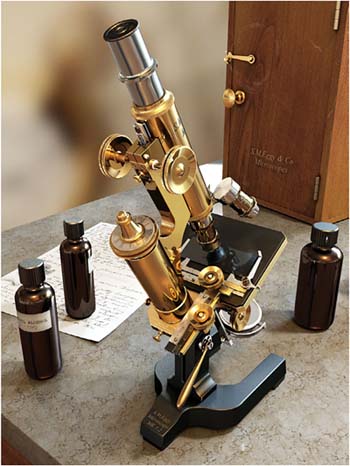Chapter 6. Image-Based Lighting
Paul E. Debevec
Image-based lighting (IBL) is the process of illuminating scenes and objects—be they real or synthetic—with images of light from the real world. IBL evolved from the techniques known as environment mapping and reflection mapping [3, 20], in which panoramic images are used as texture maps on computer generated (CG) models to show shiny objects reflecting real and synthetic environments. When used effectively, image-based lighting can produce highly realistic renderings of people, objects, and environments, and it can be used to convincingly integrate computer generated objects into real-world scenes.
The basic steps in image-based lighting are
1. | Capturing real-world illumination as an omnidirectional, high dynamic range image. |
2. | Mapping the illumination on to a representation of the environment. |
3. | Placing the 3D object inside the environment. |
4. | Simulating the light from the environment illuminating the CG object. |
Figure 6.1 shows an object illuminated entirely using IBL. The light was captured in a kitchen and includes light from the fixture on the ceiling, the blue sky from the windows, and the indirect light from the walls, ceiling, and cabinets in the room. The light from this room was mapped onto a large sphere, and the model of the microscope on the table was placed in the middle of the sphere. Then, a global illumination renderer was used to simulate the object's appearance as illuminated by the light coming from the sphere of incident illumination. The model was created by Gary Butcher in 3D Studio Max, and the renderer used was the "Arnold" global illumination system written by Marcos Fajardo.
Figure 6.1. A microscope, modeled by Gary Butcher in 3D Studio Max, rendered using Marcos Fajardo's "Arnold" rendering system with image-based lighting captured within a kitchen.

Because it is illuminated with captured lighting, the image of the computer-generated microscope should look much like a real microscope would appear in the kitchen environment. IBL simulates not just the direct illumination from the ceiling light and windows, but also the indirect illumination from the rest of the surfaces in the room. The reflections in the smooth curved bottles reveal the appearance of the kitchen, and the shadows on the table reveal the colors and spread of the area light sources. The objects also reflect each other, owing to the ray-tracing component of the global illumination techniques being employed.
The first part of this chapter describes the theory and practice of image-based lighting and provides concrete examples of the technique in action using Greg Ward's RADIANCE lighting simulation system. The second part of the chapter presents advanced image-based lighting techniques, such as having the objects cast shadows into the scene and capturing lighting that varies within space. The final part of this chapter discusses image-based relighting, which is the process of synthetically illuminating real objects and people with light captured from the real world.
